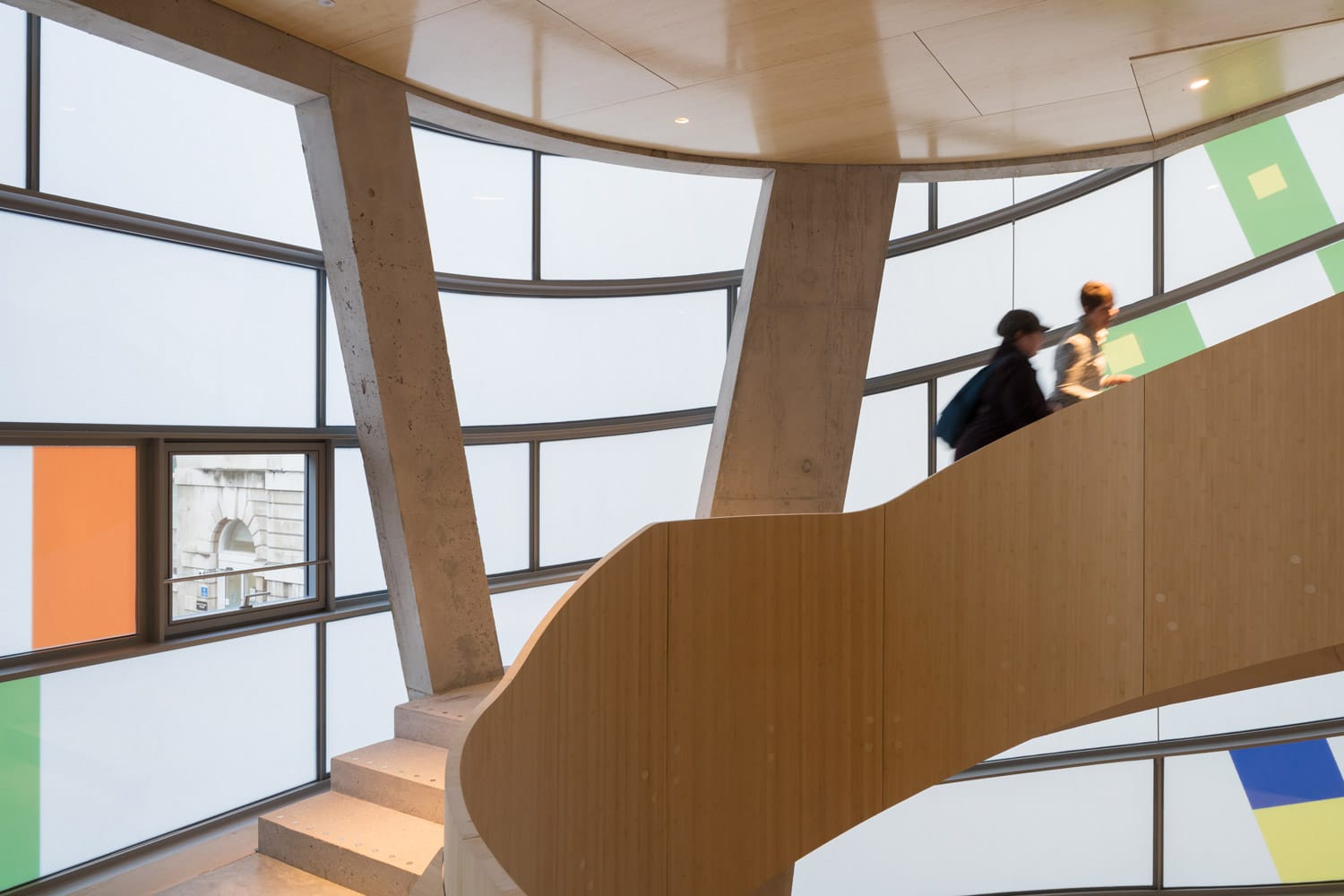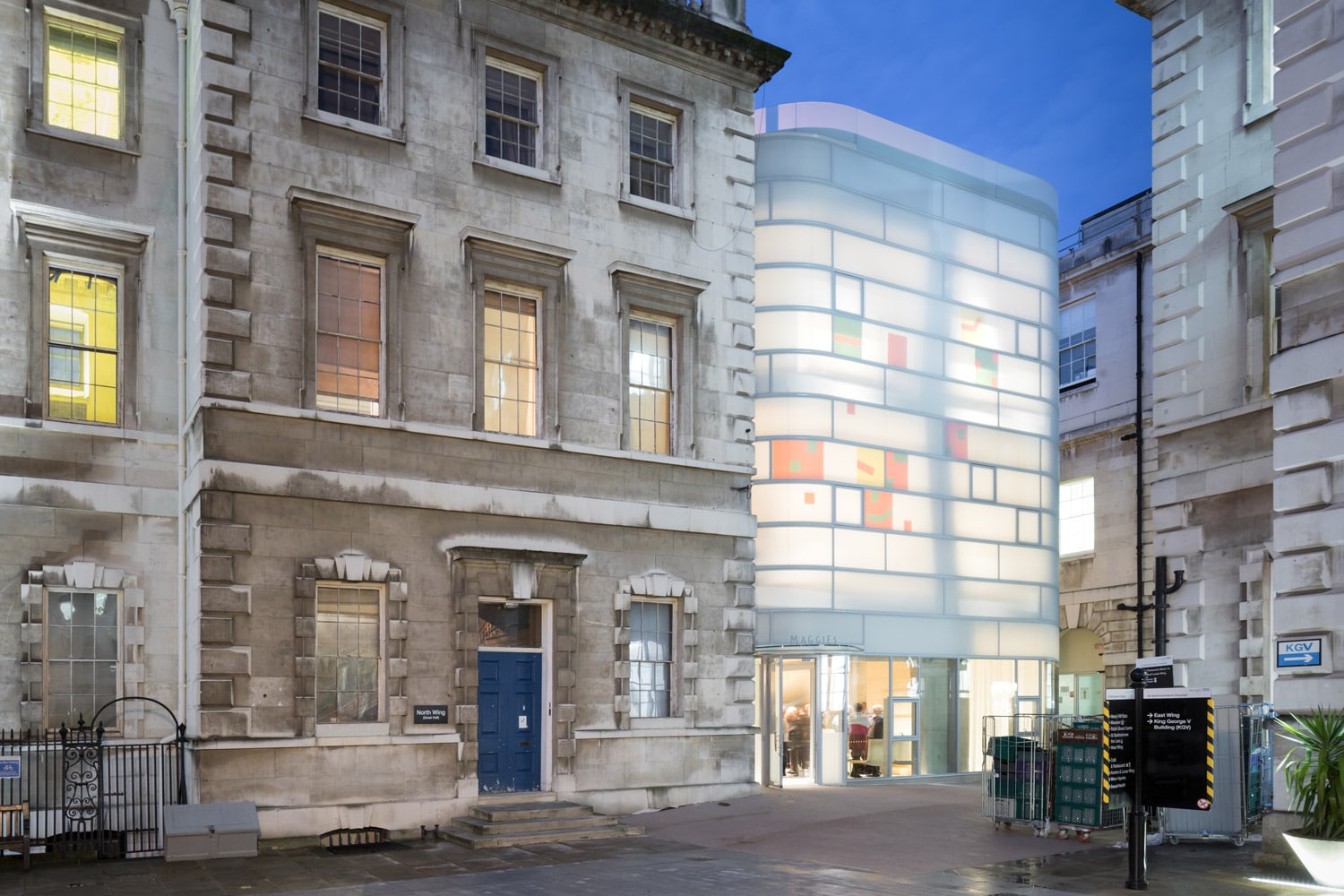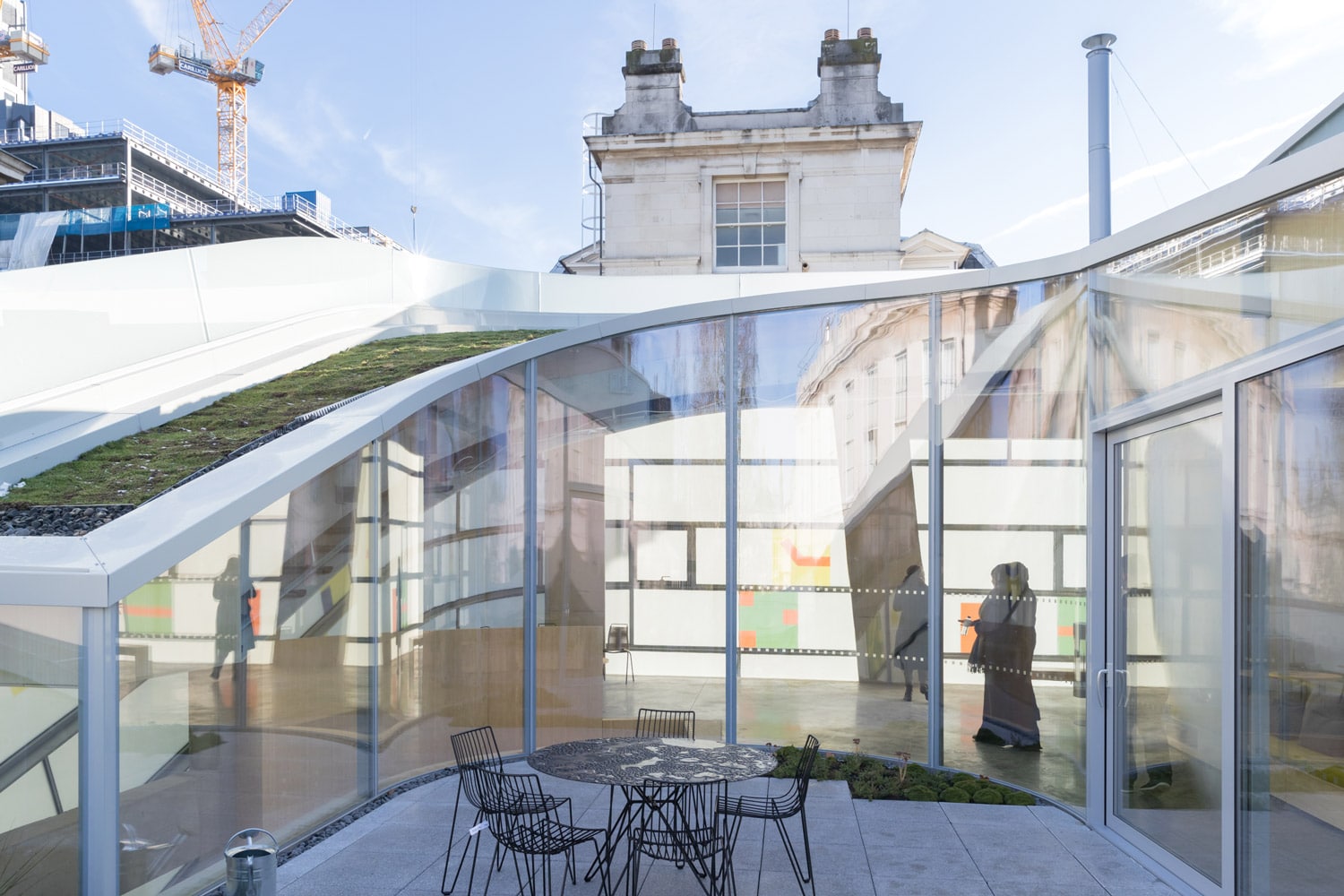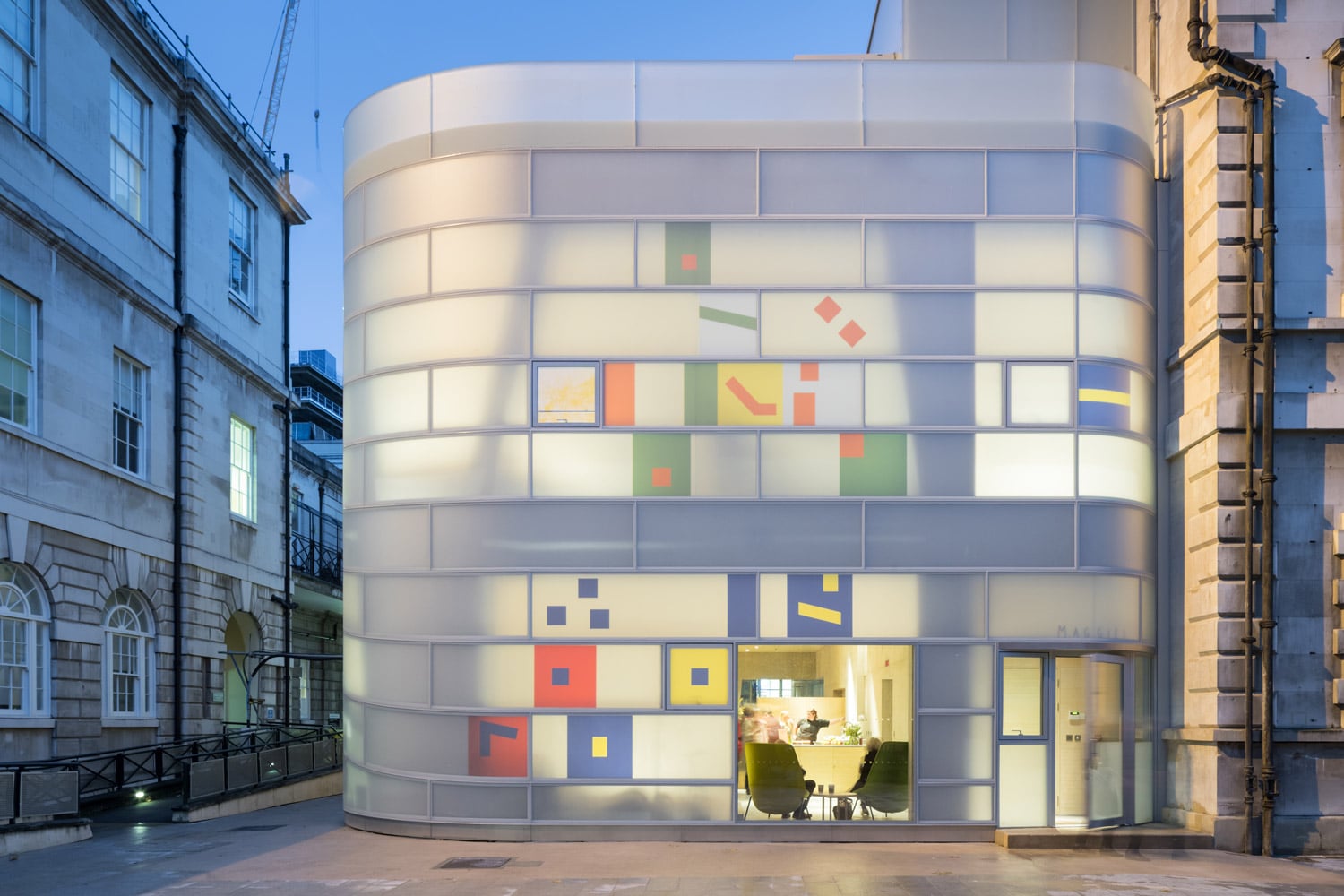Story at a glance:
- Steven Holl Architects built Maggie’s Centre Bart, a center for cancer patients and their families to receive emotional and social support.
- The new center in London was designed using sustainable materials like bamboo.
- Exposed concrete was used to construct the branching frame of the building, increasing the potential to be used as thermal mass.
A healthy environment helps people feel better. That was the philosophy when designing Maggie’s Centre Barts—a drop-in facility in downtown London where people suffering with cancer and their families can receive emotional and social support.
Architects designed a distinct structure with a variety of sustainable features to create a healthy, home-like atmosphere for the sick to find solace in hard times. “The goals went hand-in-hand in this case,” says Dominik Sigg, associate at Steven Holl Architects. “When the building feels healthier, people will like it better. As opposed to large mechanical systems that are not very intuitive for users.”
The center is located next to historic St. Bartholomew’s Hospital—the oldest hospital in London, founded in 1123. The site’s history presented a challenge for architects who didn’t have a lot of space to work with but wanted to create a comfortable, welcoming environment full of natural light. “The site itself was very important to us, but it was also very challenging with a lack of light and views, and the emotional context … the way we wanted to make people feel,” says Laura Lee, chief executive of Maggie’s Centres. “Steven Holl created an environment where you come in and immediately feel you are in a safe place away from the dominance of the hospital. It is a unique approach they took with the materials and the color … Immediately you have a place you are curious about and distracted and happy to be in. You can grieve more easily and are more open to difficult conversation. The building helps make our job at Maggie’s easier.”
Maggie’s Centres are typically built horizontally, but because of the space limitation, the Barts location was built vertically. For the building’s exterior, designers used a polychrome insulating glass—designed specifically for the project by manufacturer Okalux—with an acid-etched finish for a white matte look, rather than the shiny glass typically used in corporate buildings, Sigg says.

The center was built vertically instead of the firm’s traditional horizontal design. Photo courtesy of Steven Holl Architects
The glass has colored inserts organized horizontally—like a music staff—inspired by the “neume notation” of medieval music. “Neume” originates from the Greek word “pneuma”—meaning vital force. “This was about creating hope and joy of living in the face of fear,” Lee says. “It is very much about what music does to the spirit and a physical way to bring that emotional piece out.”
The design of the glass minimizes solar gains while maximizing the amount of natural light. Internally, the architects used zoned LED lighting to be efficiently controlled based on needs at various times of the day.
A green roof and rooftop terrace—where visitors can participate in meditation and yoga, among other things—were installed to increase the biodiversity of the site and improve air quality, a factor that is “not very good locally in the heart of London,” Sigg says. The green roof and landscaping features were also designed to reduce storm water runoff and the urban heat island effect while having aesthetic benefits. “There are not just ecological advantages to having a green roof; it is also a nice thing for the user. The roof is on a slope so you can see it from the vantage point of the terrace, and it becomes part of the garden.”

The center brings softness and light to London’s architecture. Photo courtesy of Steven Holl Architects
To give the center more of the comforts of home, Sigg says the building is naturally ventilated with windows. You won’t find any large mechanical system here. Instead, the center is connected to the hospital’s central heating system to allow for more efficient heating of the building.
Architects chose simple materials when designing the building’s interior. The walls, ceiling, and much of the built-in and loose furniture are made from bamboo—one of the fastest growing renewable resources. By using bamboo, the architects take pride in supporting an industry with a positive environmental impact, Sigg says. Bamboo also absorbs large quantities of carbon dioxide, thus helping remove it from the atmosphere.
Exposed concrete was used to construct the branching frame of the building, increasing the potential to be used as thermal mass, according to Sigg. Using concrete allows the building to absorb and store heat, releasing it later—leading to fewer spikes in heating and cooling requirements.

The center also has an outdoor space for families to spend time together. Photo courtesy of Steven Holl Architects
Project Credits
Project name: Maggie’s Centre Barts
Location: London, England
Completion: December 2017
Size: 6,534 square feet
Architect: Steven Holl Architects
Associate Architects: JM Architects
Landscape Architects: Bradley-Hole Schoenaich




